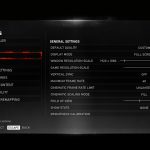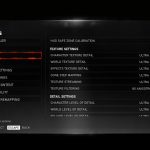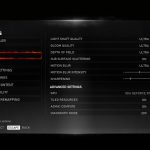The first technical test for Gears 5 is currently underway and its PC graphics settings have surfaced online. Similarly to Gears of War 4, The Coalition has implemented a lot of graphics settings (and when I say a lot, I mean A LOT), allowing PC gamers to adjust numerous details that will affect the game’s visuals and improve overall performance.
To give you an idea, the game comes with a Resolution Scale option, a Field of View slider, options to lock the framerate (naturally the game supports unlocked framerates), advanced options for Sharpening, Motion Blur Intensity and Ambient Occlusion Intensity, as well as advanced settings for Tiled Resources and Async Compute.
Honestly, it’s not a stretch to say that Gears 5 offers the best PC graphics settings we’ve seen in a game. Of course we shouldn’t be surprised by this as Gears of War 4 also featured a huge number of graphics settings. Still, it’s good witnessing The Coalition treating the PC as a first-class citizen.
Gears 5 is powered by Unreal Engine 4 and will be taking advantage of DX12. Gears of War 4 ran amazingly well on the PC platform so we expect Gears 5 to also be incredibly optimized on our platform.
Similarly to Gears of War 4, Gears 5 also comes with a built-in benchmark tool and below you can find videos showing an NVIDIA GeForce RTX2080Ti running it. We’ve featured three videos showing 1080p, 1440p and 4K results on NVIDIA’s most powerful gaming graphics card.
Do note, however, that these are overclocked RTX 2080Ti GPUs, meaning that the game may run slower on cards with lower frequencies. On these particular overclocked RTX2080Ti GPUs, Gears 5’s technical test runs above 60fps on both 1080p and 1440p, and manages to offer an average of more than 60fps in 4K on Ultra settings.
Gears 5 is currently scheduled for a September 10th release.

John is the founder and Editor in Chief at DSOGaming. He is a PC gaming fan and highly supports the modding and indie communities. Before creating DSOGaming, John worked on numerous gaming websites. While he is a die-hard PC gamer, his gaming roots can be found on consoles. John loved – and still does – the 16-bit consoles, and considers SNES to be one of the best consoles. Still, the PC platform won him over consoles. That was mainly due to 3DFX and its iconic dedicated 3D accelerator graphics card, Voodoo 2. John has also written a higher degree thesis on the “The Evolution of PC graphics cards.”
Contact: Email






